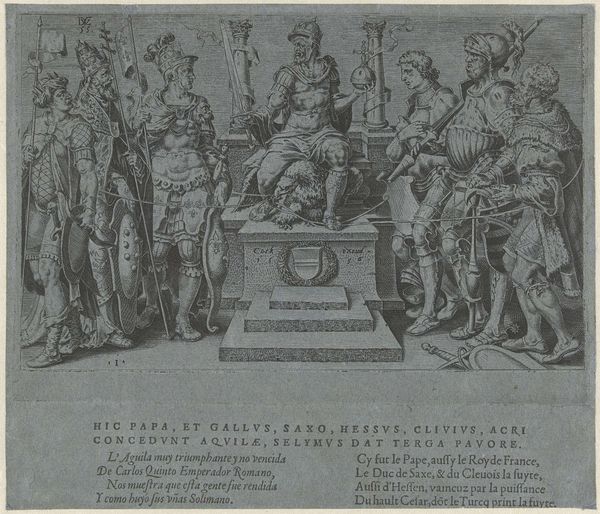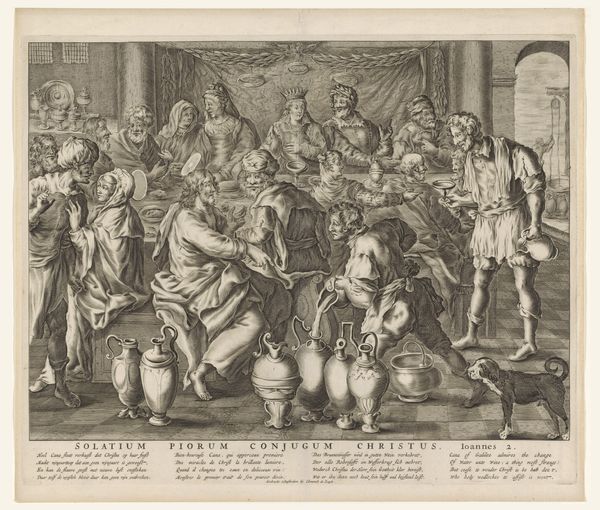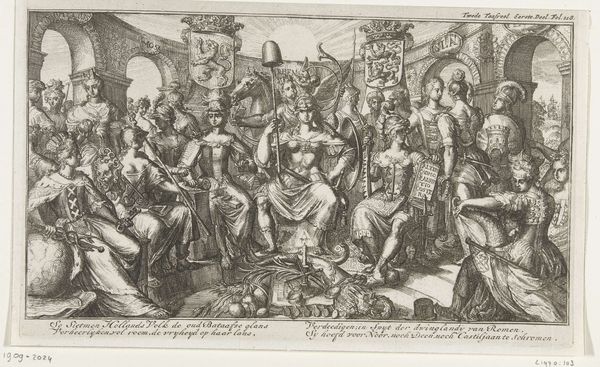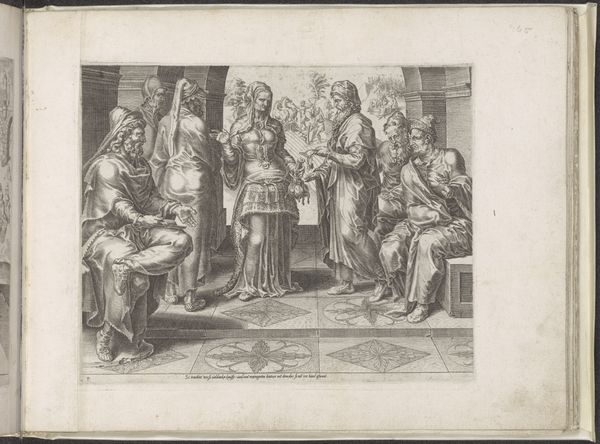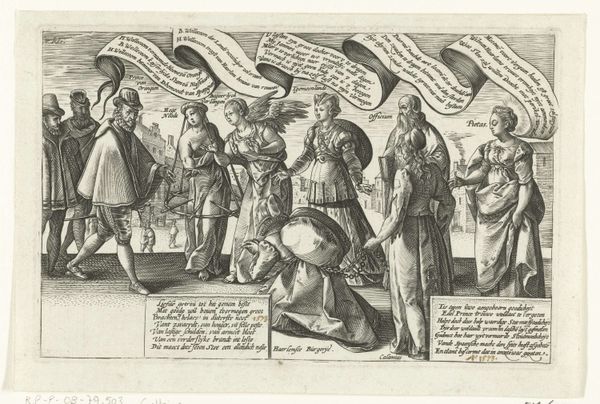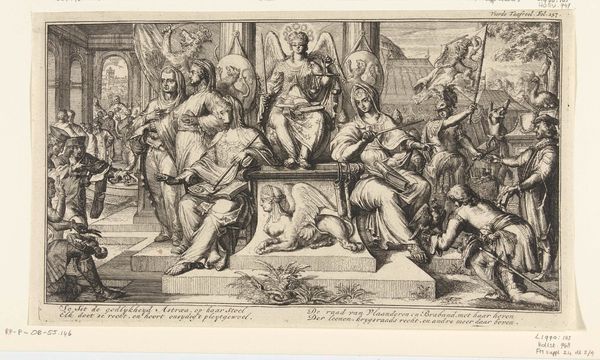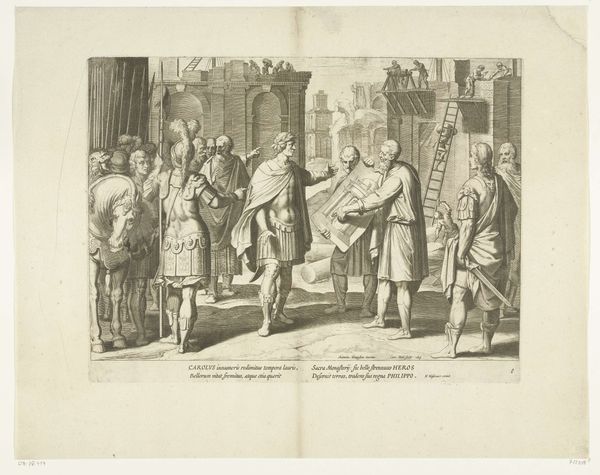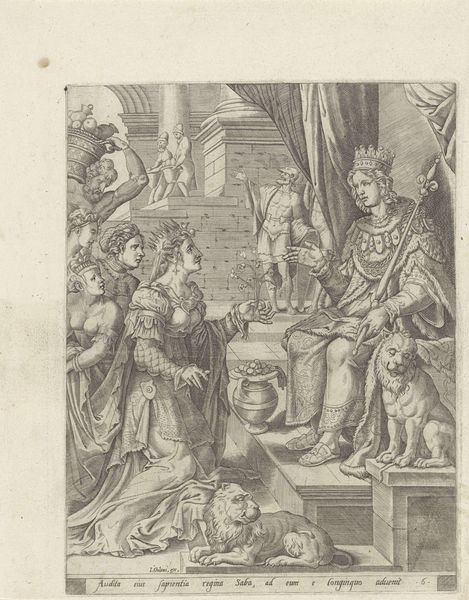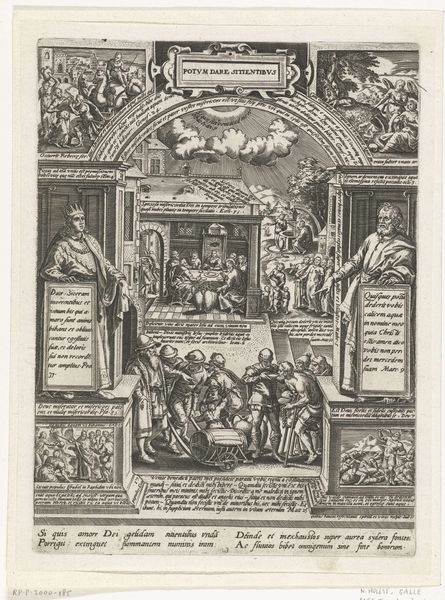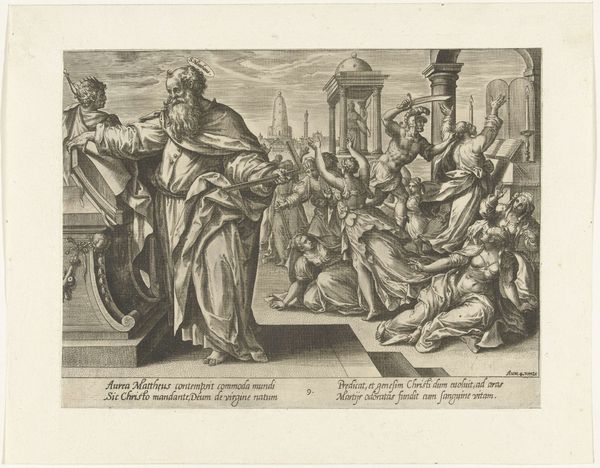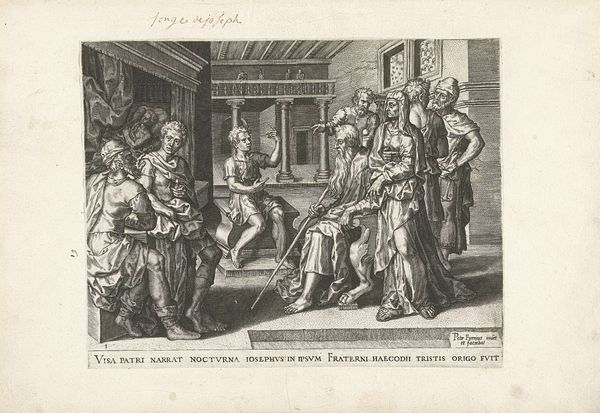
Karel V tussen zijn verslagen vijanden, nr. 1 1555 - 1556
0:00
0:00
print, engraving
#
portrait
# print
#
old engraving style
#
mannerism
#
figuration
#
history-painting
#
engraving
Dimensions: height 155 mm, width 229 mm, height 225 mm, width 305 mm
Copyright: Rijks Museum: Open Domain
Curator: Isn't it wild how certain images just thrum with historical power? Take a look at this engraving, "Charles V Among His Vanquished Enemies, No. 1," dating back to 1555-1556, made by Dirck Volckertsz Coornhert. Editor: My initial reaction? Claustrophobia. So many figures crammed into a small space. The central figure is clear enough, enthroned, almost god-like, but the others… it feels like a collection, not a composition. Ironic, considering it's meant to depict triumph. Curator: Precisely. It's a potent visual statement about power dynamics in the 16th century. Coornhert, well-versed in Mannerism, used engraving to underscore the Emperor's dominance. The "vanquished enemies" – that's Pope Paul III, Francis I of France, the Duke of Cleves – quite a lineup bowing to Charles V. Editor: But their submission... it's forced, isn't it? They’re crowded into a subservient position, yes, but their faces betray resentment, not reverence. It’s not a clean, triumphant victory. It's a messy political reality captured in miniature. That lion at the foot of Charles's throne seems almost apologetic. Curator: The piece also speaks volumes about the politics of imagery. Printmaking allowed such potent messages to circulate widely. Think about the cultural and institutional impact, how such images were tools to bolster imperial prestige, influence public opinion, and etch Charles V’s reign into collective memory. Editor: Absolutely. It's a fascinating case of propaganda meeting art. What strikes me too, looking again, is the incredible detail achieved through engraving, like looking closely to a stage crammed with intricate sets. Coornhert must have been painstakingly illustrating political dynamics with an extraordinary and slightly sardonic flourish of visual force. Curator: And consider the symbolism carefully staged within this small picture frame: a play of armor, robes, and averted gazes that suggests complex relationships between earthly and holy powers as seen through the single man: the Emperor himself. It’s both beautiful and brutally honest. Editor: In short: It’s not just about victory but the cost and the complicated realities lurking beneath grand imperial designs. Power, politics, propaganda—it’s all there, etched in exquisite detail. A glimpse into a world both distant and eerily familiar, maybe? Curator: A fine testament to our ever evolving nature.
Comments
No comments
Be the first to comment and join the conversation on the ultimate creative platform.
